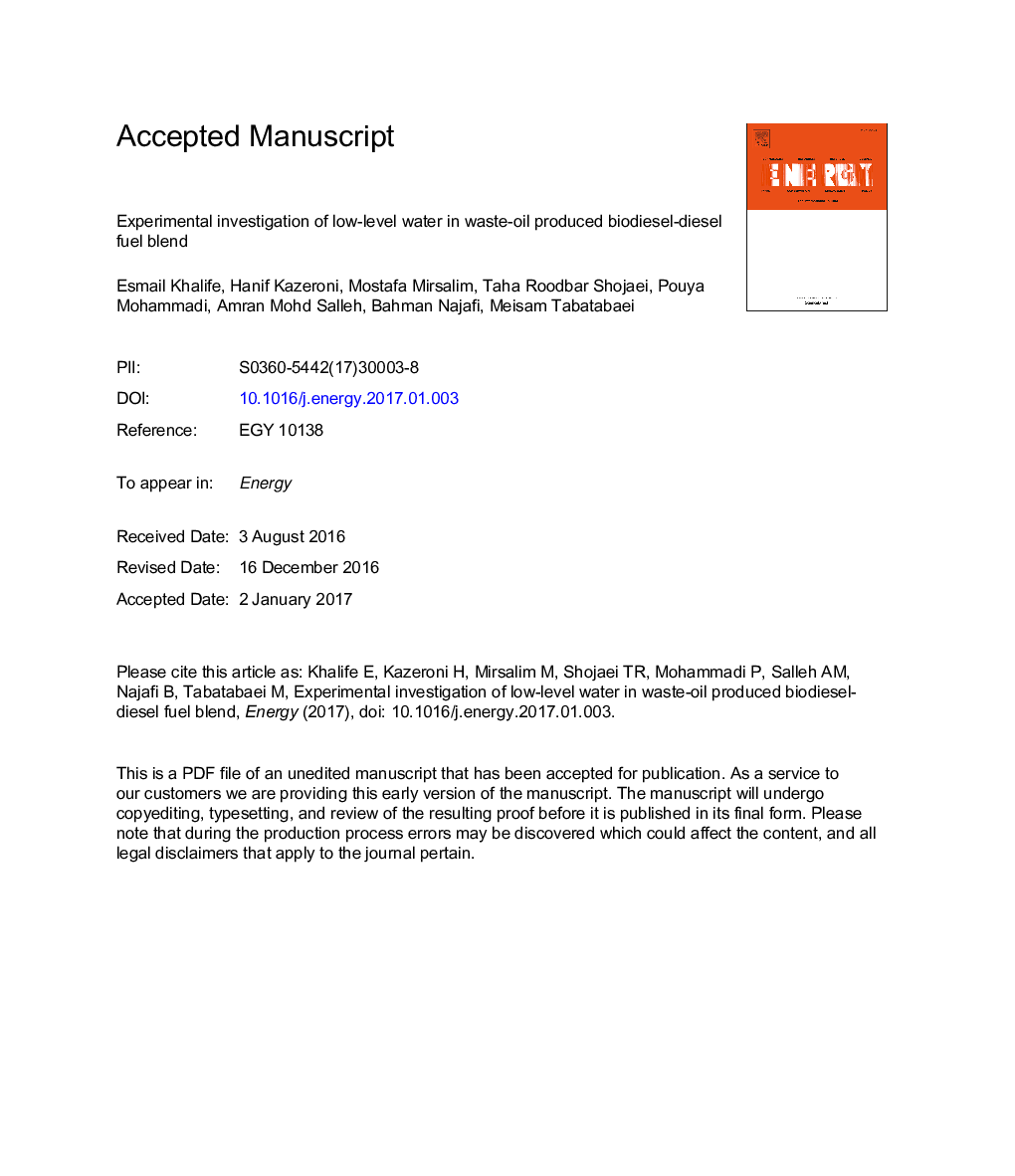| Article ID | Journal | Published Year | Pages | File Type |
|---|---|---|---|---|
| 5476329 | Energy | 2017 | 41 Pages |
Abstract
Diminishing fuel resources and stringent emission mandates have demanded cleaner combustion and increased fuel efficiency. Three water addition rates, i.e., 2, 4, and 6Â wt% in biodiesel-diesel blend (B5) was investigated herein. Combustion characteristics of the emulsified fuel blends were compared in a naturally-aspirated diesel engine at full load and different engine speeds. More specifically, biodiesel was produced from waste cooking oil (WCO) and to further increase waste utilization, recycled biodiesel wastewater was used as additive in B5. The result obtained showed that low-level water addition (i.e., 2 and 4Â wt%) in B5 led to different results from those obtained using higher water addition rates (i.e., >5Â wt%) reported by the previous studies. In more details, the findings of the present study revealed that low level water addition in B5 could considerably reduce CO, HC, CO2, and NOx emissions. Among water-containing B5 fuel emulsions, the optimal water addition level in terms of engine performance parameters and emissions was found at 4Â wt%. In particular, the emitted CO2, HC, and NOx were decreased by over 8.5%, 28%, and 24%, respectively, at maximum speed of 2500Â rpm.
Related Topics
Physical Sciences and Engineering
Energy
Energy (General)
Authors
Esmail Khalife, Hanif Kazerooni, Mostafa Mirsalim, Taha Roodbar Shojaei, Pouya Mohammadi, Amran Mohd Salleh, Bahman Najafi, Meisam Tabatabaei,
